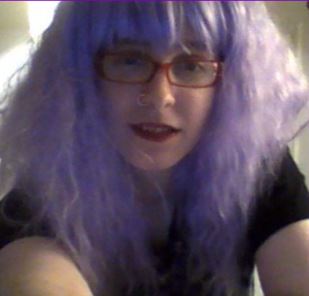Lines in the Sand
By Sol Santana
My parents tell me I was my doctor’s only live intersex birth. I think they mean it as a point of pride, maybe curiosity. Growing up, it mostly meant I was alone.
Don’t get me wrong—they are awesome parents. Whenever my physician pushed for medical procedures, they questioned them. Mom and Dad put my bodily autonomy above the need to make sure I looked like every other little girl. Or boy. For a while there, we weren’t sure.
But I knew I didn’t—look like everyone else, that is. They didn’t like to talk about it. They didn’t want me to talk about it, to them or to anybody else. It was a secret. When something is a secret, it’s because it’s either too wonderful to share, or too awful. So I was very young when I formed the idea that there was something wrong with me.
Books were what changed that. I think I was twenty when I discovered None of the Above by the wonderful I.W. Gregorio. I devoured it in two days. I felt seen, and more importantly, a part of a greater whole. Intersex people were everywhere, and we just didn’t know. We were all fed the same falsehood about how rare we were.
Back then, I thought it was only a matter of time before literature exploded with intersex characters. Especially YA literature, which I’ve long considered the arbiter on changing societal views. Empathy is best learned when we’re young.
That didn’t happen. I can think of maybe five novels with prominent intersex characters. There’s Jeffrey Eugenides’ Middlesex, lyrically gorgeous, but problematic in its conflation of intersex with inbreeding. (Intersex occurs as naturally as red hair, or twins.) It’s not really suitable for kids. And the author famously bragged about refusing to interview real intersex people. I don’t think it’s possible to faithfully represent a people at the cost of their exclusion.
When I started writing Just Ash (Lerner 2021), I wanted to do the opposite. I wanted to include in the conversation people whose lived experiences were the opposite of mine. Because there’s no one way to grow up intersex. You can be phenotypically male and genetically female. You can be the opposite, or both. You can be genetically male, but give birth to biological children. Some of us have horrible parents. Some of us suffer chronic pain from surgeries we were forced through in childhood. Some of us despise the way we were born, and some of us find it beautiful, and exciting.
There’s one woman I don’t think I’ll ever forget: a friend from an online support group, probably the biggest influence on this novel. She wondered whether her being intersex was responsible for her being bisexual. I told her I wasn’t educated enough to say. We talked a little about her parents, and then she revealed they disowned her, because she married a woman. They were there when she was born. They made the decision to raise her as female–luckily for her, the right one. Had they raised her as male, had she internalized that identity, they would have been fine with her wife. But because they flipped a coin, and it landed on tails, they destroyed their relationship with their own child. That is unfathomable to me. That is an arbitrary line in the sand.
Lines in the sand have no place in an empathetic society. I want to kick over every one I see. I want my doctor’s next live intersex birth to grow up knowing they are normal, and cherished. I don’t want them to have to discover who they are in a public library.
But the library is just the right place to start that conversation.
Text and images are courtesy of Sol Santana and Lerner Books may not be used without expressed written consent.



Leave a Reply